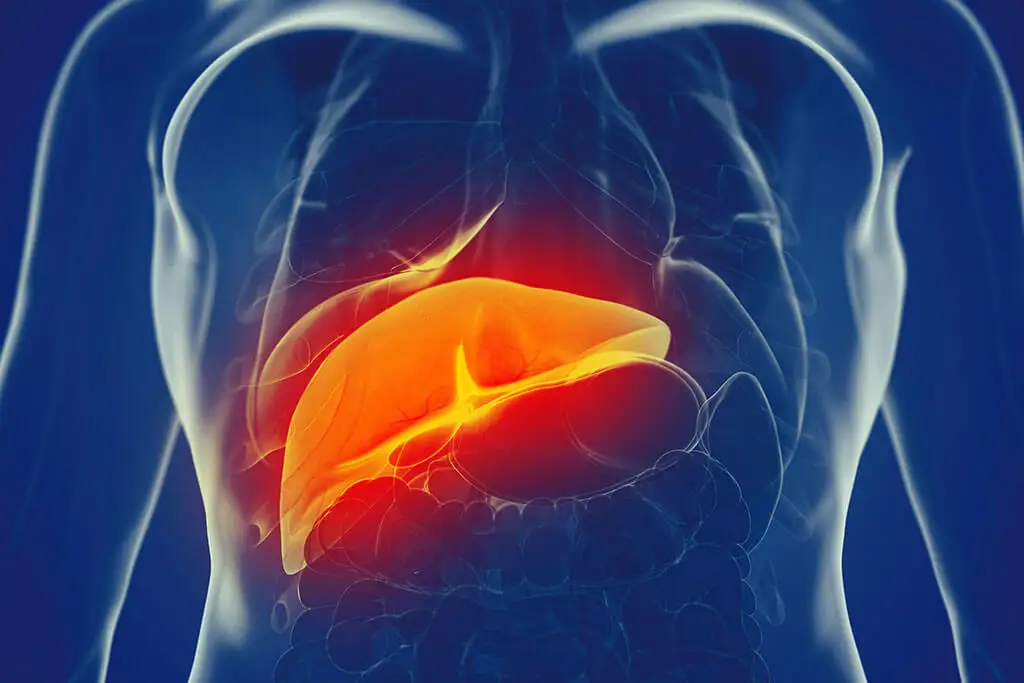The New Hepatitis Outbreak in Children: Causes, Symptoms, Prevention and Treatment


Written and verified by the doctor Maryel Alvarado Nieto
The European Center for Disease Prevention and Control (ECDC) reported in its week 14 report, dated April 8th, that an increase in acute hepatitis cases in children had been detected in the United Kingdom. However, the origin of this new hepatitis outbreak in children hasn’t yet been clarified.
Hepatitis, a pathology that affects the liver causing inflammation of this organ, has various causes. Among them are viral infections and intoxications, both by drugs and by toxins present in the environment.
What is the most common cause of hepatitis in children?
There are several viruses capable of altering how our liver functions. For this reason, they’re known collectively as hepatitis viruses or hepatotropic viruses. They correspond to viruses A, B, C, D, or delta and E.
However, they come from different viral families. Even though they affect liver tissue, not all of them do so in the same way.
On the other hand, some pathogens that have a certain predilection for liver tissue, but this isn’t so noticeable, so they’re considered non-hepatotropic. They serve as a differential diagnosis in acute infantile hepatitis:
- Cytomegalovirus (CMV)
- Epstein-Barr virus (EBV)
- Herpes simplex virus (HSV) 1 and 2
- Varicella-zoster virus (VZV)
- Human herpesvirus (HHV) 6 and 8
Other causes of hepatopathies
In addition, some situations cause changes in the liver. Here are some examples:
- Drug intoxication: Paracetamol one of the most common culprits
- Vascular causes in patients with heart disease and arrhythmias
- Obstructive pathologies of the biliary tract
- Autoimmune involvement

Read more here: 5 Types of Hepatitis and Their Main Characteristics
What are the symptoms of acute hepatitis in children?
One of the most striking signs of acute hepatitis is jaundice, i.e. a yellowing of the skin and mucous membranes. However, this isn’t the first manifestation to appear, although it’s often the most obvious.
Learn more here: The Symptoms and Treatment of Infant Jaundice
In its early stages, symptoms are trivial and nonspecific, making diagnosis unlikely. Early clinical manifestations include the following:
- A lack of appetite
- Fever
- Fatigue
- Muscular and abdominal pain
- Nausea and vomiting
- Diarrhea
Icteric phase
After a few days, the characteristic yellow coloration of hepatitis appears, affecting the skin and mucous membranes. This color is due to the presence of a pigment: bilirubin.
This molecule requires the action of the liver to be transformed into substances that are easier to eliminate. Because of these modifications, bilirubin can pass into the intestine, where it colors the feces.
Similarly, the blood circulation allows the transformed bilirubin to be carried to the kidneys, where it’s filtered into the urine. In acute hepatitis, the passage to the intestine is altered due to inflammation of the liver tissue. This is why it accumulates in the blood, giving a yellowish tint to the skin.
As there isn’t enough pigment in the intestine, the feces can’t be dyed properly, so they acquire a pale hue. This condition is called acholia. Also, because bilirubin is accumulated in the blood, it’s more easily filtered into the urine, which is called choluria.
How is acute hepatitis in children diagnosed?
Experts should always perform thorough checks to find the probable cause. Even though bilirubin values may be higher, the hallmark tests for acute hepatitis are transaminase determinations.
These liver enzymes can increase by more than 10-fold. It’s important to note that the severity of hepatitis isn’t associated with this increase, so a high figure only confirms the disease, but doesn’t classify its severity.
Other tests can be requested when evaluating a patient with acute hepatitis:
- Alkaline phosphatase
- Prothrombin time
- Total, direct and indirect bilirubin
- Gamma-glutamyltranspeptidase (GGT)
To confirm a causative agent, we can determine specific antigens and antibodies for each of them. These serological studies can be requested, following the orientation of both the suspicion and the time of evolution of the pathology.

Is it possible to prevent hepatitis in children?
Because the way a disease is acquired differs with each cause, the mechanisms of transmission have been grouped into two:
- Of alimentary origin
- Contagion by patenteral route
In this way, recommendations can be suggested to try to prevent transmission. In addition, vaccination against hepatitis A and B viruses is part of the childhood immunization schedule.
Fecal-oral transmission
This is the classic route of transmission described for acute hepatitis A and E viruses. The former is the most common in childhood.
Children or adults who don’t wash their hands properly after going to the toilet and having a bowel movement can cause contamination. They can easily contaminate different surfaces and food, which are shared by other people.
Recommendations to prevent this contagion include the following:
- Only drink water suitable for drinking
- Vigorous hand washing after using the toilet
- Follow hygiene rules when handling and consuming food
- Not having sexual contact with a person with hepatitis
Other forms of transmission
In contrast, for hepatitis B, C, and D viruses, transmission occurs by routes other than the digestive tract. In addition, these types are usually chronic.
This mechanism includes sexual contact and any exposure of the skin or mucosal lesions to the body fluids of an infected person.
Treatment
In general terms, as it often has a viral cause, the management of acute hepatitis includes general care with bed rest, and a light diet, as well as addressing the symptoms affecting the patient.
However, the severity of the case may require hospital admission. There’s no specific treatment for all childhood acute hepatitis.
Why hasn’t it been possible to determine the cause of the new hepatitis outbreak in children?
Since the United Kingdom reported a new hepatitis outbreak in children, it has been difficult to establish the cause. In particular, because no common link can be found.
On the other hand, hepatotropic viruses have already been ruled out as causative agents. The current investigation is focused on determining whether there are commonalities among the affected children, so that the search can be targeted.
This analysis is made somewhat more complex by the fact that the outbreak has spread to other countries, with no apparent pattern. As it does, it puts more children at risk. The evolution has been severe, with cases requiring a liver transplant, and even one case of death.
This whole scenario surrounding the new hepatitis outbreak makes the investigation a priority. For the moment, in addition to ruling out the classic hepatitis viruses, the presence of an adenovirus has been determined in some cases, while others have tested positive for SARS-CoV-2.
All cited sources were thoroughly reviewed by our team to ensure their quality, reliability, currency, and validity. The bibliography of this article was considered reliable and of academic or scientific accuracy.
- Cruz-Hernández, M.; Jiménez, R.; Tratado de Pediatría; Volumen 1; Editorial Océano; Barcelona, España; 2007
- Aguilera, A.; Romero, S.; Regueiro, B.; Epidemiología y Manifestaciones Clínicas de las Hepatitis Virales; Enfermedades Infecciosas y Microbiología Clínica; 24 (4): 264 – 276; 2006
- Costa, L.; Monsalve, F.; Callejas, D.; Porto, L.; Estévez, J.; Castellanos, M.; Mindiola, R.; Diagnóstico Diferencial de Virus Hepatotropos y no-Hepatotropos en Pacientes Atendidos en el Laboratorio Regional de Referencia Virológica. Kasmera 38 (1): 60 – 68; 2010
- Gálvez, R.; Rosales, J.;García. M.; Afectación Hepática de Origen Infeccioso no Relacionado con Virus Hepatotropos; RAPD Online; 43 (1); 2020
- Pérez, J.; Aguilar, J.; Estudio Diagnóstico del Paciente con Hepatitis Aguda; GH Continuada; 5 (2); 2006.
This text is provided for informational purposes only and does not replace consultation with a professional. If in doubt, consult your specialist.








